The
Phonograph and Its Future

Probability:
Clocks
.
Clocks.
-- "The Phonographic
Clock will tell you the hour of the day; call you to lunch; send
your lover home at ten, etc.".
Although, talking clocks continued to
be described as a possibility in the following decades after Edison
identified them in 1878 as highly probable, few clocks actually talked.
One exception was Frank Lambert who in 1878 invented a machine that
used a voice recorded on a lead cylinder to call out the hours. Lambert
used lead in place of Edison's soft tinfoil. According to Wikipedia
the next talking clock was until 1910 with Hiller's Speaking Clock
(see below).
The Phonoscope, December 15,
1896 reported on the Phonographic Clock in the following article:
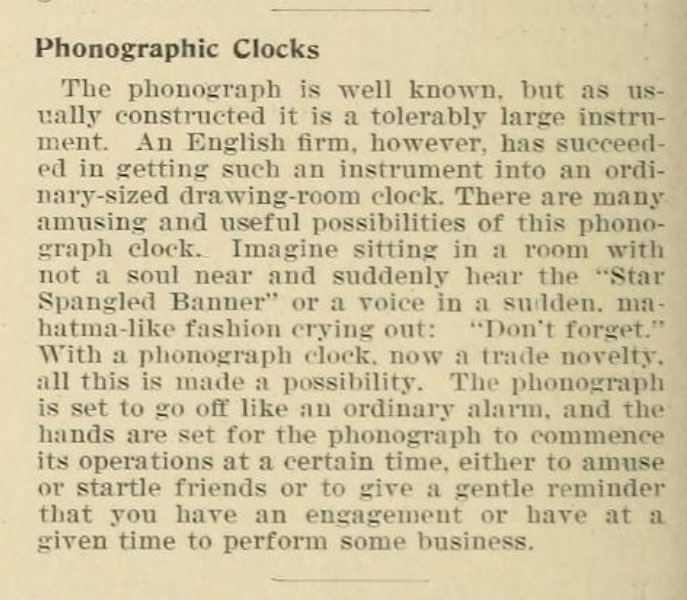
The Phonoscope,
December 15, 1896
A Phonograph Clock was the star of this
1897 cartoon illustrating that the phonograph as a talking clock was
still part of popular culture's view of possibilities.
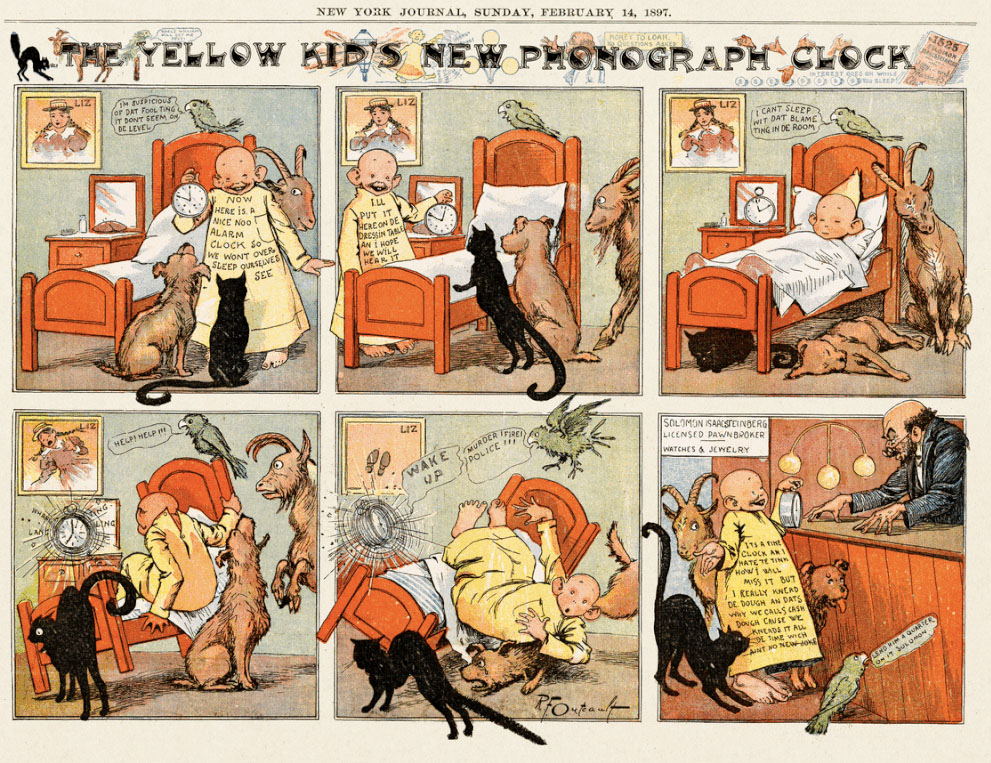
Yellow Kid's Talking Clock
by R. F.Outcault, New York Journal, Feburary 14, 1897 (Wikimedia
Commons)
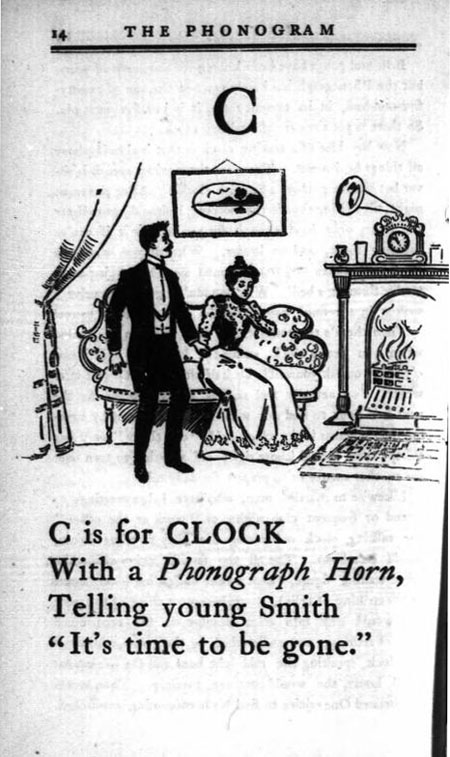
The Phonogram (May
1900) included an alphabet related to the Phonograph with "C is
for CLOCK"

The Phonogram (July 1901) announced
a talking alarm clock was being developed in Switzerland that would
be very "useful".
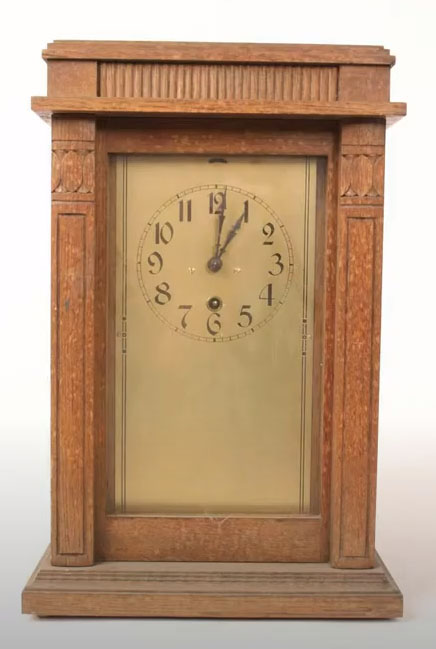 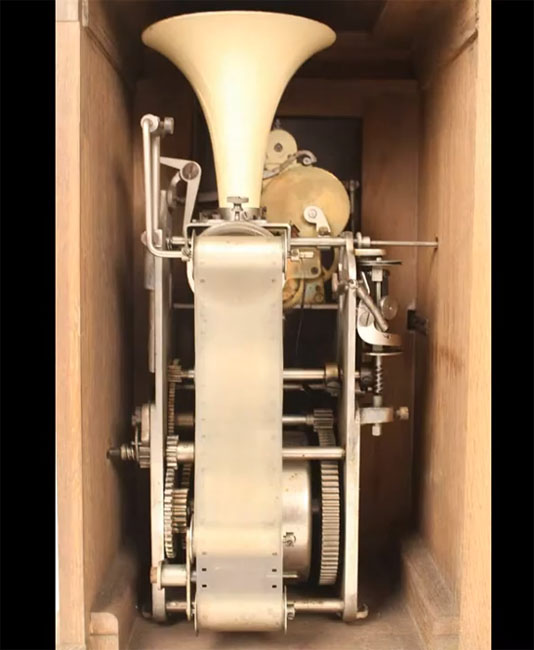
Hiller Speaking Clock (Sprechende Uhr
ca 1910-1913 (inside shows recorded film used for announcing time)
Courtesy of Phalos
Southpaw's Bastelstube where discussion of restoration and demonstration
of soundtrack is available).
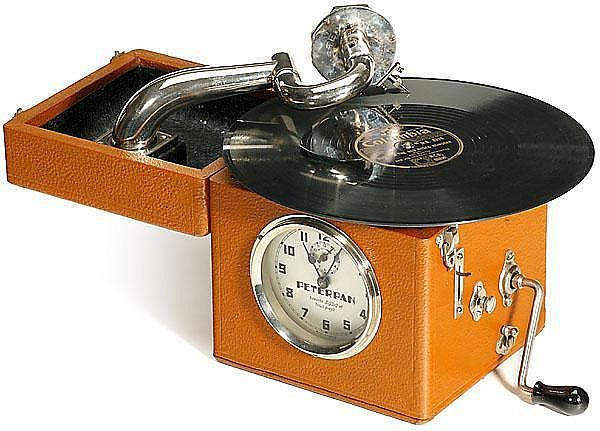
Alarm Clock Gramophone "Peter Pan,"
c. 1930 Swiss made soundbox. This alarm could be set for a time and
then record would play at that time.
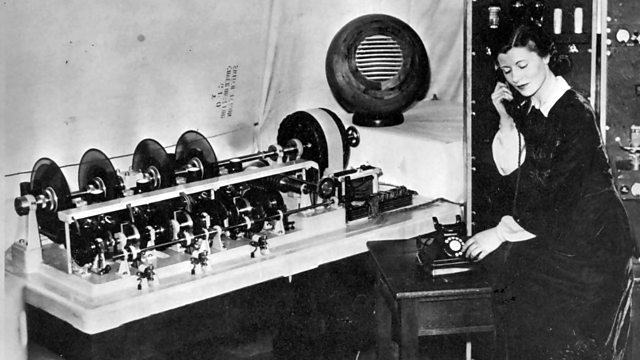
BBC Speaking Clock with
human voice of time recorded. Courtesy of BBC
A speaking clock or talking clock is
a live or recorded human voice service, usually accessed by telephone,
that gives the correct time. The first telephone speaking clock service
was introduced in France, in association with the Paris Observatory,
on 14 February 1933. - Wikipedia
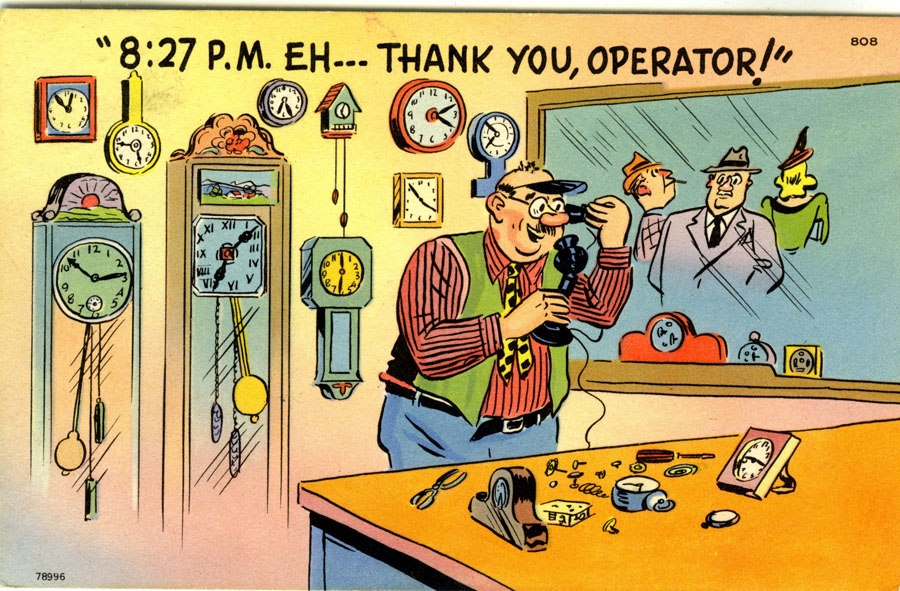
Operator-assisted time
information, postcard c.1945
Several toy clocks in the 1950's and
1960's 'talked" by using a miniature phonograph and record inside
the toy, however, the 1968 Mattel-a-Time Talking Clock was the first
toy that was a talking clock and a working clock.

Mattel-a-Time, 1968
In the 1970's and 1980's a variety of
children's alarm clocks were marketed that kept time and spoke messages
using a "record". These talking alarm clocks featured pop culture
characters like Howdy Doody, Big Bird, Batman, Charlie Brown, Mickey
Mouse -- each, with its respective voice, telling the child that it
was time to get up.
In 1979 Sharp released the world's first
quartz-based talking clock2 and in the 1990's computer chips replaced
records in talking clocks.
The following are a few popular culture
examples displaying the fulfilled probabilities for the 'Future' of
Edison's Phonograph.
Clocks. -- "The
Phonographic Clock will tell you the hour of the day
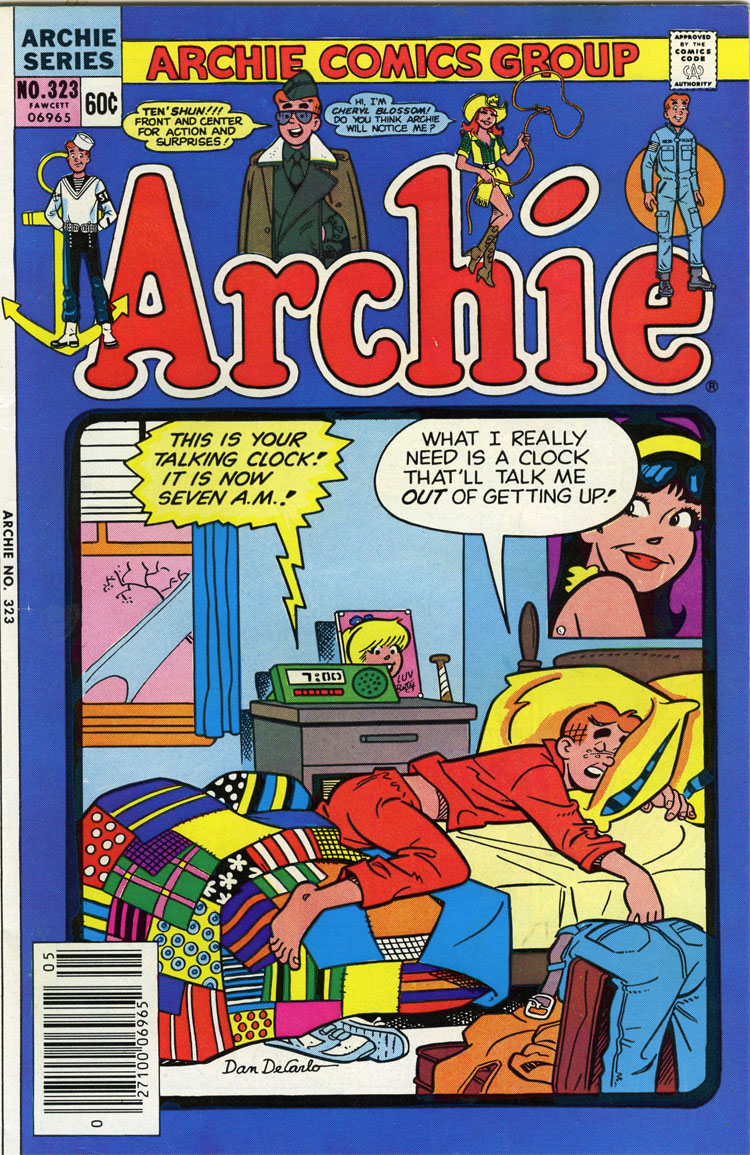
"It is Now Seven A.M.!"
- Archie Comics May 1983

Computer chips have replaced phonograph
records in clocks and other devices. - (Courtesy
Dilbert, October 21, 2001 - This cartoon is available for Purchase)

Garfield by Jim Davis as
seen in Lincoln Journal August 2, 2021
Clocks. -- "The
Phonographic Clock will send your lover home at ten, etc.".
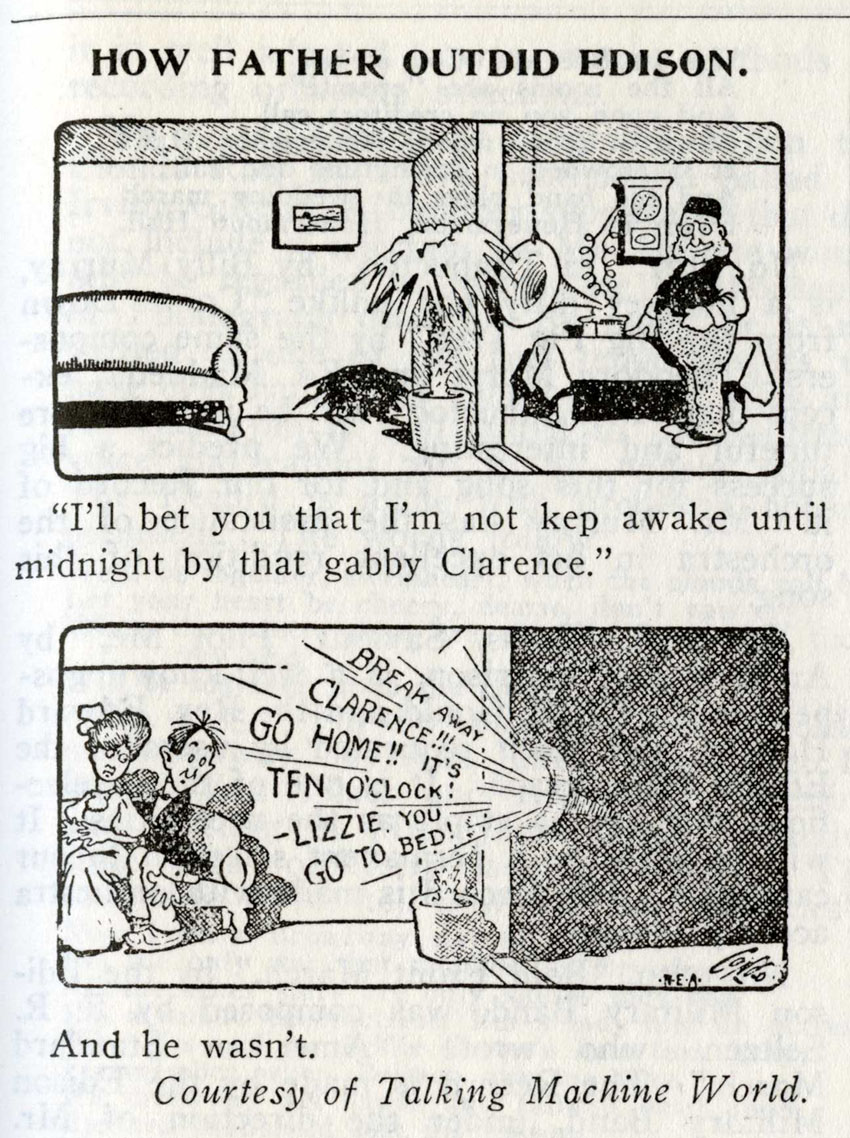
From The Talking Machine
World as reprinted in The Edison Phonograph Monthly, 1905
Grandfather clocks and Cuckoo clocks
didn't "talk" but they did provide sounds to indicate what
hour it was.
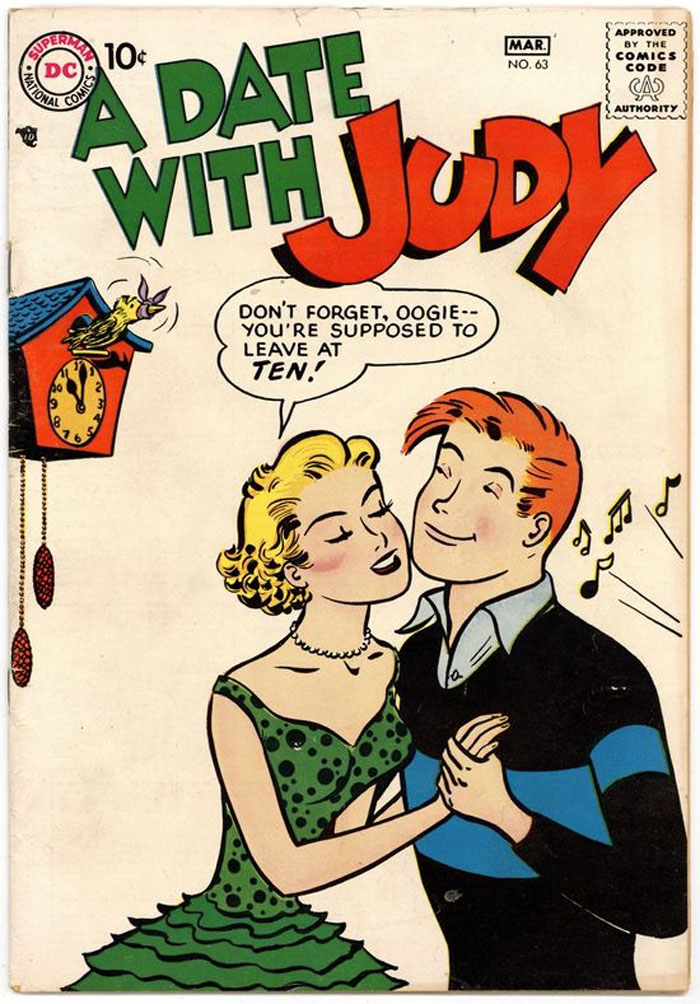
The Cuckoo Clock is Silenced
- A Date with Judy, March 1958
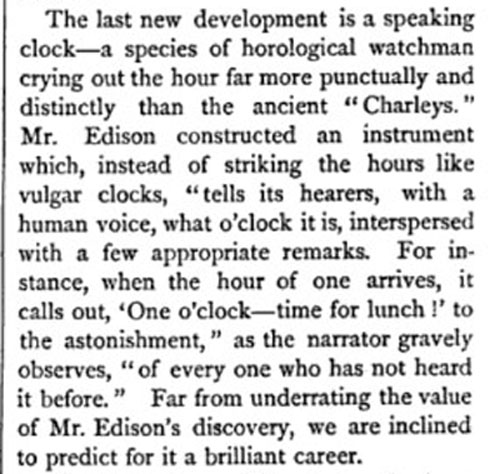
Edison's Speaking Clock - "...when
the hour of one arrives, it calls out, "One o'clock--time for
lunch!"
The Pictorial Cabinet of Marvels
by Harrison Weir, Published by James Sangster and Co., London, 1879
(under the heading The Phonograph p. 268)
The Golden Age of Children's Talking
Clocks Exhibit
An exhibit of talking clocks with record
players inside of them from the Golden Age of Children's Talking Clocks
were displayed in 2017 at the Westminster Public Library, Westminster,
CO. See Talking Clocks
and the Phonograph for more examples and details.
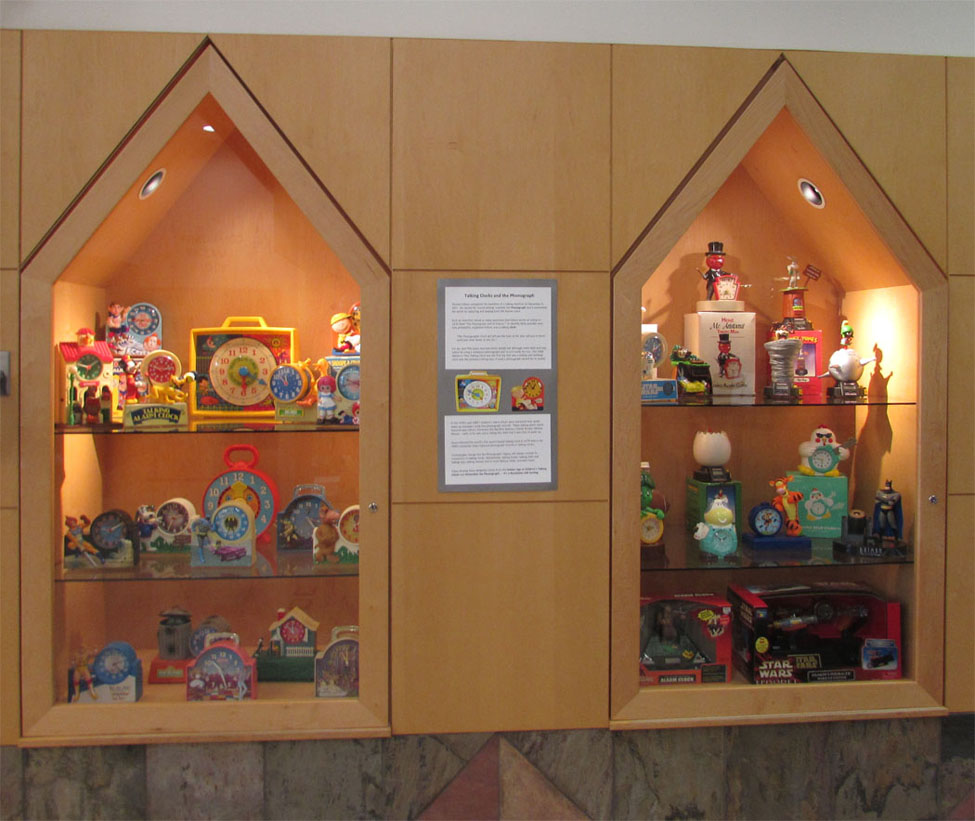

Phonographia
|


















